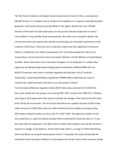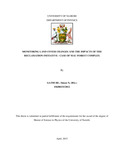| dc.description.abstract | The Mau Forest Complex is the largest closed canopy forest in Eastern Africa, covering about
400,000 hectares. It is of great value to Kenya and its neighbors as it supports hydroelectricpower
generation, the tourism industry and agriculture in this region. Despite this, over 100,000
hectares of the forest has been destroyed over the past few decades largely due to human
encroachment. Using satellite based measurements, this study sort to establish whether the
current restoration and conservation policies are producing any noticeable improvement in the
condition of the forest. There was also an attempt to determine how vegetation in the forest
relates to rainfall and Land Surface Temperature (LST). By understanding how the forest is
responding to current restoration and conservation initiative, and the influence of climatological
variables, better restoration and conservation strategies can be developed. To achieve these
objectives, the Moderate Resolution Imaging Spectroradiometer (MODIS) MOD13Q1 and
MOD11C3 products were used to estimate vegetation density/vigor and LST variation
respectively. Tropical Rainfall Measuring Mission (TRMM) 3B43 rainfall data was used to
estimate the rainfall received by the forest over the period of interest.
The Normalized Difference Vegetation Index (NDVI) time series, extracted from MOD13Q1
data, were divided into two groups; one covering 2001-2007 and the other 2008-2013. Ordinary
Least Square (OLS) slopes were then used to estimate the changes in the trend of the NDVI time
series during the two periods. The result show that there was a general increase in NDVI values
within the forest in 2008-2013, with over 26% of the Mau Forest Complex recording positive
NDVI slopes during this period, up from only 7% in 2001-2007. The regression analysis results
show that there is a weak correlation between NDVI and Rainfall R2 values less than 0.5. It was
also observed that vegetation in the Mau Forest Complex takes between one and two months to
respond to changes in precipitation. On the other hand, there is a strong LST-NDVI relationship,
with some blocks recording R2 values greater than 0.7. Generally, this study showed that the
restoration and conservation initiative is producing positive results, hence more resources should
be allocated to it. Higher spatial resolution sensors should also be used to determine how the
forest is changing at a finer spatial scale | en_US |


